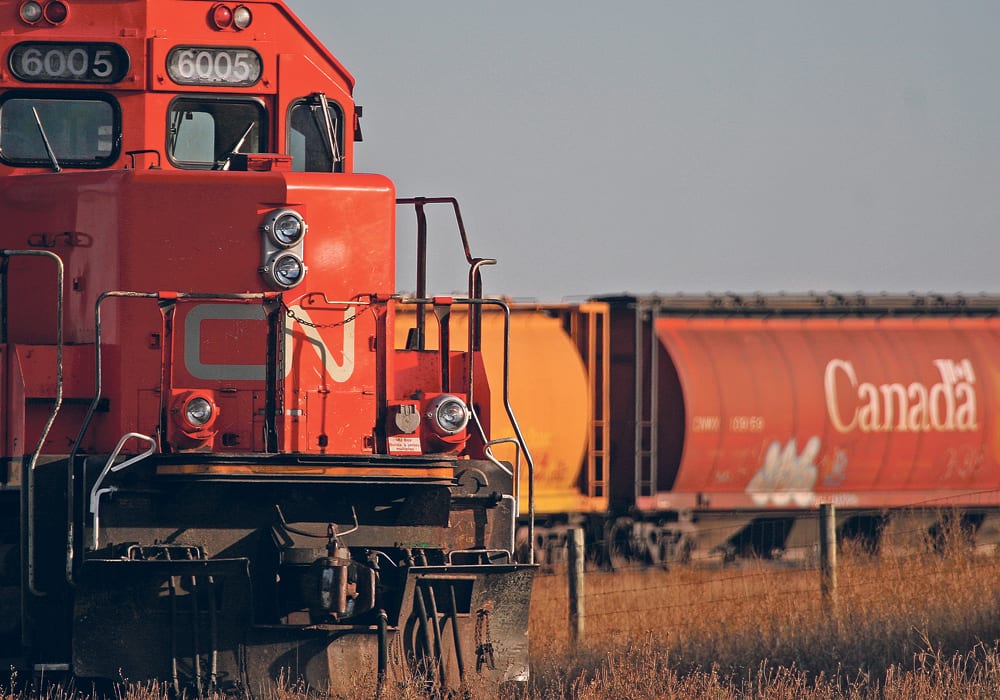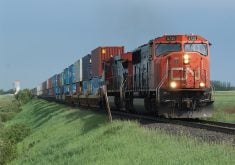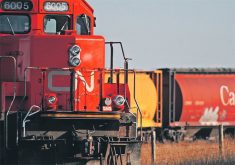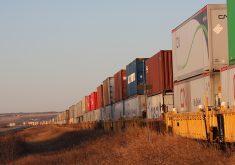Ottawa is selling off bits and pieces of its shrinking federal hopper car fleet at fire-sale prices.
According to the Federal Hopper Car Report prepared by Transport Canada, Ottawa sold 440 refurbished grain hopper cars in 2017 at a value of slightly less than $6,000 per car.
The sale of the so-called “terminated” hopper cars generated $2.46 million.
The terms of the sale are outlined in existing operating agreements signed by Ottawa and the country’s largest railway carriers, Canadian National Railway and Canadian Pacific Railway — documents that Ottawa calls confidential.
Read Also

Farming Smarter receives financial boost from Alberta government for potato research
Farming Smarter near Lethbridge got a boost to its research equipment, thanks to the Alberta government’s increase in funding for research associations.
All of the federal hopper cars that were sold in 2017 were manufactured before 1975, making them some of the oldest cars in the federal fleet.
But all of the cars were refurbished and are still in use. At an average sale price of $5,590 each, they were acquired at bargain basement values.
By comparison, the salvage value of federal hopper cars that were damaged or destroyed in 2017 was nearly $15,000, meaning Ottawa sold operational hopper car units at about 37 percent of their salvage value.
“In 2017, 58 cars were damaged and destroyed … (and) a total of $868,260 was received as settlement value for the damaged and destroyed cars in 2017…,” the hopper car report states.
“Additionally, 440 refurbished cars were terminated from the (government) fleet, as the railways exercised their rights to purchase these cars in accordance with their operating agreements.
“Revenues … received by the Government of Canada … (included) … $2.46 million for the termination of the upgraded cars.”
Transport Canada officials declined to be interviewed.
Instead, the federal government issued a brief statement that offered few details about the transaction.
“Both CN and CP refurbished some of these hopper cars to extend their useful service life…,” the Transport Canada email stated.
“The Government of Canada considered the capital investment that the railways made in these hopper cars and enabled both CN and CP to purchase them,” it continued.
“The specific formulas that calculate the purchase price and scrap value are outlined in the confidential operating agreements between the Government of Canada and each railway.”
Between 1972 and 1994, the federal government bought 13,500 rail hopper cars to carry western Canadian grain to export terminals.
Under past and current operating agreements, the federal government provides the cars at no cost to CN and CP to transport prairie grain to export locations at Vancouver, Prince Rupert, Thunder Bay and Churchill.
The railway companies pay an alternate-use charge to Ottawa if they use the hopper cars to transport products other than regulated grain.
As of Dec. 31, 2017, the size of the federal fleet was reported at 7,872 cars, down from 8,370 hoppers a year earlier.
Of the 7,872 cars remaining, about 40 percent are due to be removed from service between 2026 and 2027 and another 59 percent are due to be retired between 2031 and 2036.
By 2044, all of the cars in the government fleet will be retired and the fleet will no longer exist.
Transport Canada prepares a federal hopper car report each year to provide updates on the size of the remaining fleet, as well as revenue generated.
In 2017, the fleet generated total revenue of $15.22 million, including $11.89 million for alternate use, $2.46 million for the sale of “terminated” cars, and $868,000 as salvage value for cars that were damaged or destroyed during use.
Over the past two years, the salvage value of scrapped or destroyed hopper cars has dropped by nearly $11,000, falling from roughly $26,000 in 2015 to $14,970 in 2017.
The Transport Canada report says the value of salvaged cars depends on a variety of factors such as the age of the cars and the price of scrap metal.


















